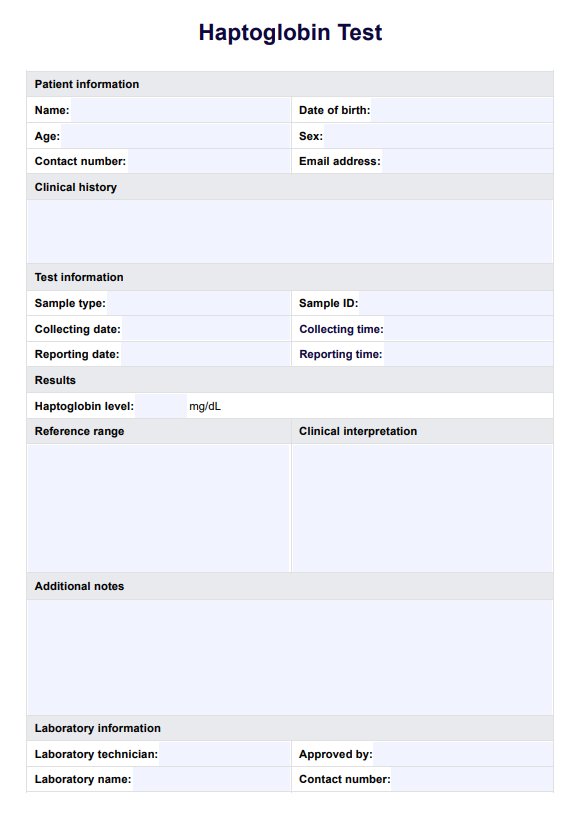Drugs like isoniazid and quinidine can decrease haptoglobin levels. These medications may reduce haptoglobin production or increase red blood cell breakdown.

Haptoglobin
Easily record and interpret Haptoglobin Test results with our simple template. Track levels, monitor conditions, and support accurate clinical decisions.
Use Template
Haptoglobin Template
Commonly asked questions
When red blood cells die, they release hemoglobin into the bloodstream, which can lead to health problems if not correctly cleared. The body uses haptoglobin to bind this free hemoglobin and prevent damage.
Hemoglobin-binding protein haptoglobin is measured in blood tests to check for excessive red blood cell destruction or inflammation. Low levels can indicate conditions like hemolytic anemia or liver disease.
EHR and practice management software
Get started for free
*No credit card required
Free
$0/usd
Unlimited clients
Telehealth
1GB of storage
Client portal text
Automated billing and online payments











